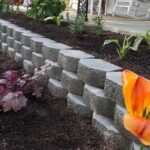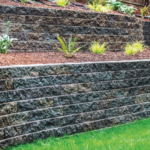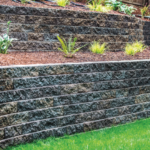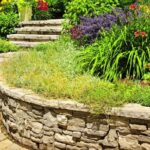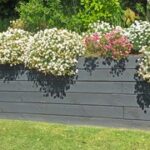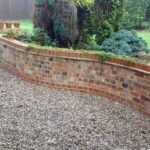Retaining walls are a crucial element in any garden, not only for their practicality in preventing soil erosion but also for their aesthetic appeal. Whether you are looking to level out a sloped garden, create defined garden beds, or simply add a touch of elegance to your outdoor space, a garden retaining wall is a versatile and durable solution.
Here is your ultimate guide to garden retaining walls:
1. Purpose and Function: Retaining walls are used to hold back soil and create level areas in a garden. They are typically used on sloped landscapes to prevent erosion and to create terraced areas for planting or seating. Retaining walls can also be used to define spaces within a garden, such as creating separate areas for a patio or a vegetable garden.
2. Materials: There are a variety of materials that can be used to build a garden retaining wall, including wood, concrete, brick, and stone. Each material has its own advantages and aesthetic appeal. Wood is a popular choice for a more natural look, while concrete and brick offer durability and a modern aesthetic. Stone retaining walls are classic and timeless, adding a touch of elegance to any garden.
3. Design and Placement: When designing a garden retaining wall, it is important to consider the overall style of your garden and the functionality of the wall. The height and width of the wall will depend on the slope of the landscape and the purpose of the wall. For example, if you are looking to create terraced garden beds, you may need a series of shorter walls, whereas a single tall wall may be needed for erosion control.
4. Drainage: Proper drainage is crucial when building a garden retaining wall to prevent water buildup and pressure on the wall. The wall should be built with a slight tilt towards the soil it is retaining to allow for water runoff. Additionally, drainage pipes and gravel should be installed behind the wall to ensure proper water flow.
5. Maintenance: Regular maintenance is essential to keep your garden retaining wall in good condition. Inspect the wall for any signs of damage, such as cracks or bulging, and repair them promptly. Remove any debris that may have accumulated behind the wall to prevent drainage issues. Also, check the drainage system regularly to ensure proper functioning.
In conclusion, garden retaining walls are a versatile and practical solution for any outdoor space. Whether you are looking to level out a sloped garden or add a touch of elegance to your landscape, a well-designed retaining wall can enhance the beauty and functionality of your garden. By considering the purpose, materials, design, drainage, and maintenance of the wall, you can create a durable and beautiful feature that will stand the test of time.

